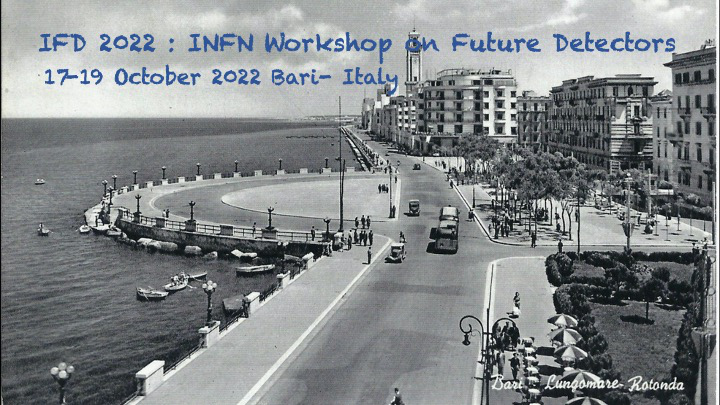Conveners
Calorimetri: Calorimetri
- Francesca Cavallari (Istituto Nazionale di Fisica Nucleare)
- Massimo Casarsa (Istituto Nazionale di Fisica Nucleare)
- Monica Sisti (Istituto Nazionale di Fisica Nucleare)
- Ivano Sarra (Istituto Nazionale di Fisica Nucleare)
Several compounds can be utilised as cryogenic detectors; the main requirement is a small thermal capacitance, which allows an high sensitivity and a fast thermalisation time. Depending on the physics applications, several challenges have to be faced. The pileup between events depositing energy in a time interval faster than the thermalisation time can be non negligible when the source is...
Crystal calorimetry has a long history of pushing the frontier of high energy resolution measurements for EM particles. Recent technological developments in the fields of crystal manufacturing and photodetector developments (SiPMs) have opened new perspectives on how a segmented crystal calorimeter with dual-readout capabilities could be exploited for particle detectors at future collider...
Recently, a test has been performed by the INFN-STORM collaboration on the H2 line at CERN SPS North Area with a hundred-GeV electron beam on two PWO samples, which confirmed the acceleration of electromagnetic shower, and thus the reduction of the radiation length, in axially oriented crystals.
We measured directly, for the first time ever, the light produced by the energy deposited inside...
The Particle Flow calorimetry is a leading approach towards the 4D jet reconstruction and combines precise space and time information with unprecedented jet energy resolution. It is the most suitable approach for experiments at future high energy colliders. Particle-flow calorimeters, designed to combine the information from all the detector subsystems, requires high transverse and...
Low-temperature detectors rely on phonon counting, which is made possible thanks to the conversion, performed by highly sensitive temperature sensors, of temperature variations into electrical signals. In this contribution I’ll give a brief overview of the most commonly used sensors along with their main present limitations and the foreseeable prospects for the future.
Quantum technologies are establishing themselves relentlessly in a wide spectrum of applications, ranging from quantum computing, communication, simulation to imaging and sensing.
In the context of the ECFA Detector R&D roadmap process, many physics targets have been identified that could benefit from the unprecedented sensitivity and precision of quantum systems. In particular, materials...
We report on two R&D projects being carried out in AIDAinnova to develop innovative calorimeters with optical readout.
CRILIN is an extremely fast, highly granular calorimeter made of dense, inorganic crystals with both longitudinal and transverse segmentation, proposed as a candidate for the electromagnetic calorimeter for the Muon Collider experiment; a similar design was independently...
The NP06/ENUBET project is designing a facility with unprecedented control on the neutrino flux for high precision ($\mathcal{O}$(1%)) cross section measurements. The key part of the facility is an instrumented decay tunnel that measures large angle charged leptons from kaon decays, thus constraining the associated neutrino fluxes. It is based on a sampling calorimeter for e/$\mu$/$\pi$...
The Mu2e and MEG/MEG-II projects stand in the landscape of Intensity Frontier experiments searching for Charged Lepton Flavour Violation in the muon sector.
The Mu2e experiment will search for the conversion of a negative muon into a mono-energetic electron with a 104.97 MeV energy, and aims to improve the current experimental limit by a factor $10^4$.
The calorimeter will provide particle...

